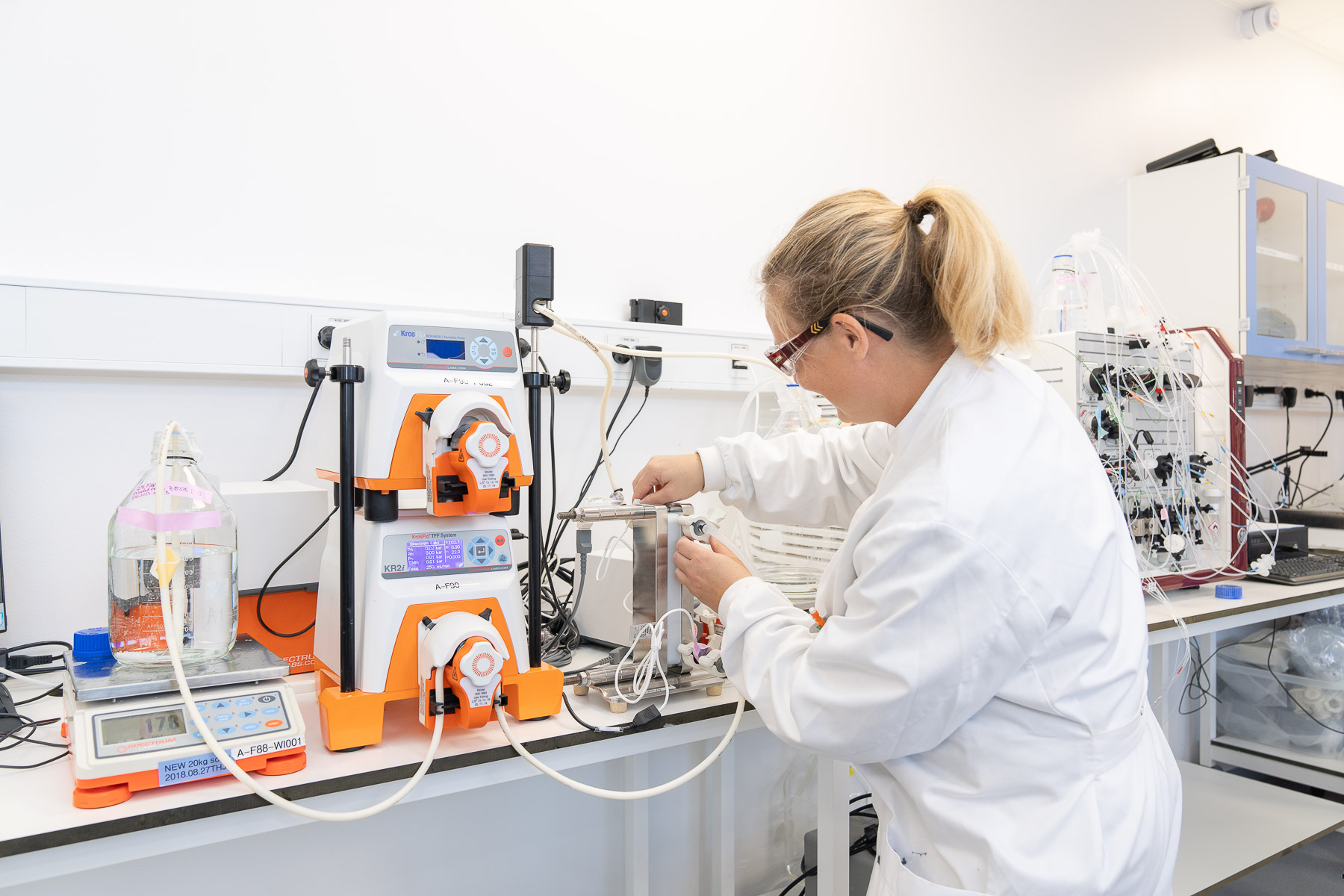- Case Study -
Unlocking the Power of Process Analytical Technology (PAT):
Elevating Downstream Process Development with Real-Time Data Monitoring

The Challenge
The biopharmaceutical industry is continually seeking new ways to enhance control and deepen understanding of manufacturing processes. Improved process understanding directly correlates with better control, potentially reducing deviations, aiding in root cause identification, and ultimately making therapeutics safer for patients.
This approach is strongly encouraged by FDA regulatory guidelines and represents a key step toward implementing a Quality by Design (QbD) framework. Quality should not be tested into products—it should be built in from the start, by design.
One way to achieve this is through Process Analytical Technology (PAT), which enables real-time process monitoring. PAT is an umbrella term that encompasses any technology capable of monitoring a process in real time—either in-line or on-line—particularly focusing on critical process parameters (CPPs) that are essential for controlling critical quality attributes (CQAs).
The AGC Biologics Solution
To enhance process understanding and control, AGC Biologics has taken the step to implement Process Analytical Technology (PAT) in our downstream processing (DSP) operations.
The selected PAT approach is based on mid-infrared (MIR) spectroscopy (Monipa, Irubis GmbH). This technology enables in-line monitoring of both the product of interest (proteins) and other excipients, such as buffer components, present in the solution.
Mid-infrared spectroscopy operates by detecting the interaction of molecular bonds with electromagnetic radiation in the mid-infrared range (400–4000 cm⁻¹). Different molecules—such as proteins, sugars, and buffer excipients—absorb light at specific wavelengths due to their unique chemical bonds. As a result, each molecule exhibits a distinct MIR spectral “fingerprint,” which allows for its identification, quantification, and real-time monitoring.

Proteins absorb in the region of 1450–1580 cm−1 and 1600–1700 cm−1 for amide II and amide I peaks. Excipients such as trehalose (and other sugars) can be identified from 950–1100 cm−1.
This real-time monitoring enhances our understanding of the process. By continuously tracking the concentrations of both the product and buffer components, we gain deeper insight into key process parameters that ultimately impact the Critical Quality Attributes (CQAs). Additionally, this approach contributes to reducing both the cost and time associated with product development and manufacturing.
PAT can be applied across all stages of development and production, from small-scale laboratory implementations to large-scale GMP manufacturing campaigns.
The Results
AGC Biologics has applied PAT monitoring of downstream processes to ultrafiltration/diafiltration (UF/DF) steps due to their critical importance. Tangential flow filtration (TFF) steps are present in nearly all biologics manufacturing processes—ranging from microbially expressed proteins to monoclonal antibodies (mAbs), antibody-drug conjugates (ADCs), bispecific antibodies, and other therapeutic proteins.
TFF is frequently used as the final downstream unit operation, where the active pharmaceutical ingredient (API) is concentrated and formulated into the final drug substance (DS). This highlights the criticality of achieving full process understanding and control of the TFF step—and the substantial advantages offered by PAT technology. Moreover, TFF steps are of growing importance in ADC processes and other downstream applications involving chemical modifications, reductions, and conjugations.
A textbook UF/DF process typically includes three main phases:
- Ultrafiltration 1 (UF1) – The biologic of interest is concentrated. For example, a typical concentration range in the industry for mAbs and other therapeutic proteins is between 5–25 g/L.
- Diafiltration (DF) – The protein of interest is buffer-exchanged into the desired formulation buffer. In this example, the formulation buffer consists of 20 mM histidine and 8% trehalose, at pH 6.0 ± 0.1.
- Ultrafiltration 2 (UF2) – The protein is further concentrated to the final target concentration required for the drug substance. In this example from 25 to 90 g/L, a common range for mAbs.

As shown in the figure above, the mid-infrared PAT technology (Monipa) enabled real-time, in-line monitoring of the product of interest (a therapeutic protein—in this case, an IgG4 monoclonal antibody) as well as all excipients (buffer components) during the UF/DF process. The system successfully tracked the up-concentration of the therapeutic protein in real time with high accuracy, maintaining an error margin within 5% when compared to the SoloVPE reference method.
Particularly relevant was the ability to monitor excipient levels during the buffer exchange phase, especially trehalose. Real-time monitoring of this sugar provided a direct and reliable indication of the diafiltration progress, achieving an accuracy within +1% compared to the known concentration.
Our PAT technology provides several key benefits. By conducting experiments in which real-time quality predictions are made, we can establish the relationships between critical process parameters (CPPs) and critical quality attributes (CQAs), thereby fostering true process understanding. As a result, development timelines can be significantly shortened, bringing us closer to real-time quality assurance and ultimately enabling faster product release. Moreover, PAT will play a pivotal role in facilitating the transition from traditional batch processing to continuous manufacturing.





